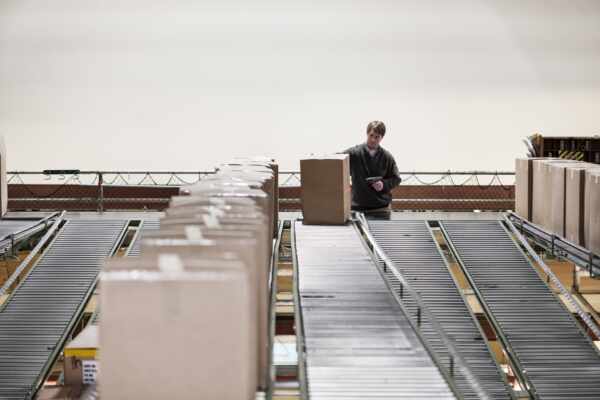Operating a safe and secure work environment is vital in any industry, particularly when dealing with conveyor systems, complex machinery, and moving parts. Ensuring the safety of employees, increasing productivity, and promoting a positive work culture go hand in hand, and adopting best practices around conveyor system safety is a vital aspect of achieving this balance. In this comprehensive guide, we’ll provide practical advice and strategies to create and maintain a secure working environment around your conveyor systems, fostering a safety-conscious culture and overall productivity in your facility.
From proper training and equipment maintenance to thoughtful design choices and safe operating procedures, we will explore various safety considerations and best practices that can be put into place to minimise the risk of accidents and injuries involving conveyor systems. Addressing potential hazards, assessing risk, and implementing preventive measures are essential in maintaining a secure work environment, and our guide will offer valuable insights to help you achieve optimal conveyor safety.
Whether you are a small facility transitioning to an automated conveyor system, an industry leader striving to maintain rigorous safety standards, or a safety officer looking to evaluate your current practices, this guide will help you reach your safety goals. So, continue reading and discover how partnering with Change Parts Pty Ltd can assist you in further enhancing your facility’s safety and productivity.
Conveyor System Safety: Best Practices and Tips for a Safe Working Environment
Understanding Potential Hazards
1. Pinch Points and Moving Parts
One of the primary hazards associated with conveyor systems is the exposure to pinch points and moving parts, such as chains, gears, and rollers. It is essential to be mindful of these areas, as workers can become injured if they come into contact with these components. To mitigate this risk, install guards around all moving parts, maintain a safe distance from the conveyor path, and ensure all employees receive adequate training on potential hazards.
2. Conveyor Belt Breaks and Slips
Conveyor belt breaks, and slips can pose serious hazards to workers due to the sudden and unexpected release of tension. To safeguard against this, regularly inspect and maintain conveyor belts, ensuring proper tensioning and alignment. Encourage employees to promptly report any signs of wear or damage to the conveyor belt for immediate attention.
3. Material Spillage and Accumulation
Material spillage or buildup on conveyor belts can lead to trip or slip hazards and possible contact with moving parts. Implement a routine cleaning schedule to remove debris and accumulated materials from the conveyor surface and surrounding area, thus reducing the risk of accidents.
4. Electrical Hazards
Conveyor systems are typically powered by electric motors, which can present electrical hazards to workers. To prevent shocks or equipment malfunction, ensure proper grounding and regular inspection of electrical components. Keep electrical panels securely closed and train employees on electrical safety and associated risks.
Implementing Safe Work Procedures
1. Employee Training and Communication
Proper training and communication are critical to conveyor system safety. Provide comprehensive training to all employees operating or maintaining conveyor systems, covering essential topics such as hazard identification, safe work practices, and emergency response procedures. Maintain open lines of communication to encourage employees to report safety concerns or incidents, fostering a proactive approach to conveyor safety.
2. Safe Access Points
Provide designated access points to facilitate safe entry and exit around conveyor systems. These access points should be clearly marked with signage and barriers, ensuring that employees do not enter restricted areas where potential hazards may be present.
3. Lockout/Tagout Procedures
Implement robust lockout/tagout procedures to ensure that conveyor systems are safely deactivated during maintenance, repair, or inspection activities. Clearly communicate these procedures to all relevant personnel and conduct regular audits to ensure consistent compliance with established guidelines.
4. Emergency Stop Systems
Install easily accessible emergency stop mechanisms throughout your conveyor system, allowing for the immediate and controlled shutdown of equipment in the event of an incident. Regularly test these systems, ensuring they are functional and visible to employees working in the area.
Designing for Safety
1. Ergonomic Considerations
Paying attention to ergonomics during the design and installation phases of a conveyor system can significantly enhance overall safety and productivity. Consider factors such as height, reachability, and item orientation to reduce the risk of injuries associated with repetitive motions, awkward postures, and excessive force.
2. Guardrails and Barriers
Incorporate guardrails and barriers into your conveyor system design to limit access to hazardous areas and prevent debris from entering walkways or work areas. Ensure that guardrails are sturdy, securely attached, and provide adequate coverage for conveyor openings.
3. Visibility and Lighting
Ensure that conveyor systems and surrounding work areas are well-lit, allowing employees to clearly see potential hazards, moving parts, and safe walkways. Utilise visual cues, such as warning lights and signage, to indicate conveyor system status and alert workers to potential hazards.
4. Routine Audits and Inspections
Conduct regular safety audits and inspections to monitor the effectiveness of your conveyor safety practices. Regular monitoring allows for ongoing improvement, ensuring that safety measures remain aligned with changing workplace conditions, equipment updates, and evolving industry best practices.
Safety through Partnership with Change Parts Pty Ltd
Implementing and maintaining effective conveyor system safety practices is essential for safeguarding your employees, maintaining operational efficiency, and promoting a healthy work environment. By understanding potential hazards, implementing safe work procedures, and incorporating safety-oriented design elements, you can help protect your team from harm and maintain a productive facility.
Let us help you achieve outstanding workplace safety with our industry-leading conveyor solutions and expertise. Pursue excellence in workplace safety and gain peace of mind by partnering with Change Parts Pty Ltd.




